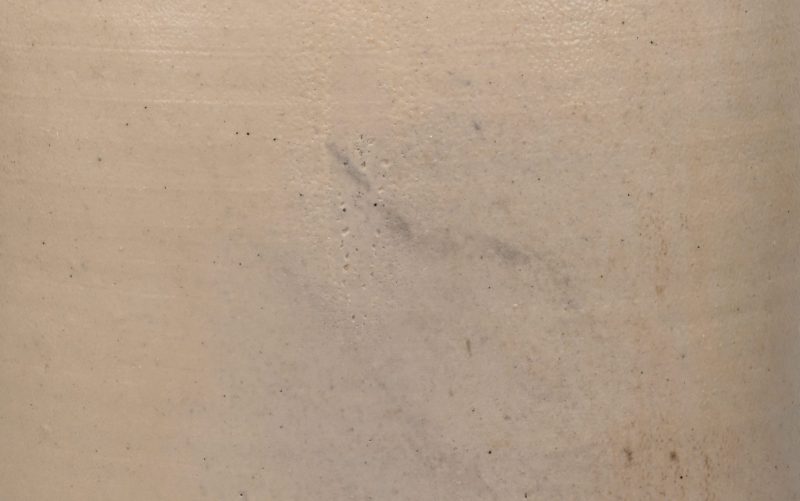
Glaze that is created on the vessel surface by adding salt (sodium chloride) to the kiln during the firing of stoneware. Due to the heat in the kiln, the chloride in the salt splits off and combines with the hydrogen in the air; the pungent hydrochloric acid that results from this passes out of the kiln-chimney, while the sodium reacts with the silica in the hot clay, forming a glass-like glaze that is chemically very stable and acid-resistant.
Translation Sandy Haemmerle
German: Salzglasur
French: Couverte au sel, glaçure au sel

